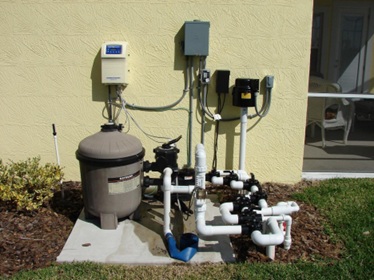
A well-functioning supply chain is the backbone of any successful large-scale development project. From construction to manufacturing, managing the complexities of a vast supply network is critical for ensuring timelines are met, costs are controlled, and quality standards are upheld. However, these large-scale projects often face significant obstacles, such as delayed shipments, disrupted sourcing, and fluctuating costs.
This guide explores practical strategies for managing supply chain challenges to help you keep your project on track. We’ll cover the key hurdles to watch out for, tools and methods to optimize processes, and some industry best practices.
Why Supply Chain Challenges are Inevitable in Large-Scale Projects
For large-scale development projects, supply chains operate on a massive scale, often involving multiple suppliers, logistical partners, and regions. This complexity comes with inherent risks, including:
- Global Disruptions: Natural disasters, pandemics, and geopolitical tensions can drastically affect the movement of goods.
- Demand Variability: Forecasting demand for raw materials or components often involves high degrees of uncertainty.
- Siloed Information: Lack of proper communication between stakeholders can lead to inefficiencies and delays.
Acknowledging these challenges is the first step toward addressing them. Effective supply chain management requires adaptability, detailed planning, and innovative problem-solving techniques.
Key Challenges and How to Tackle Them
1. Supplier Reliability
Supplier issues are among the most significant barriers to a smooth supply chain. For example, suppliers may miss deadlines due to production delays, impacting downstream operations.
Solution:
- Supplier Audits: Regular performance evaluations can help identify unreliable suppliers before they disrupt your operations.
- Multiple Vendors: Diversify your supplier base to minimize dependency on a single vendor, particularly for critical components.
2. Managing Costs in a Volatile Market
Rising costs of raw materials, shipping, and labor can throw your budget off track. These unpredictable spikes can be particularly damaging in long-term projects.
Solution:
- Contract Negotiations: Lock in favorable rates in advance with long-term contracts to shield yourself from sudden cost increases.
- Tech Integration: Use cost-monitoring tools to gain real-time visibility into expenses and spot any inefficient spending.
3. Disruption in Logistics
From shipping delays to bottlenecks, logistics disruptions wreak havoc on large-scale projects where timelines are tight.
Solution:
- Route Optimization Tools: Leverage AI-driven tools that track shipping routes and suggest alternate options to avoid downtime.
- Onshore Warehousing: Consider storing critical materials in nearby warehouses to reduce dependency on long-distance shipping.
Leveraging Technology for Smarter Supply Chain Management
Integrating modern technology into your supply chain can greatly improve efficiency and adaptability. Below are some tech-focused strategies:
Supply Chain Visibility Tools
Tools like real-time tracking systems allow stakeholders to monitor shipments across their entire supply chain. This kind of transparency not only reduces blind spots but also facilitates quicker decision-making when issues arise.
Predictive Analytics
Advanced analytics help forecast supply chain risks, such as material shortages or spikes in demand. For example, hydrovac companies in Wyoming could use predictive tools to anticipate heavy machinery demand during peak construction seasons, ensuring supply meets local needs.
Automation
From AI-powered warehouse robotics to automated data analysis, automation reduces human error and increases speed without compromising accuracy.
Best Practices to Future-Proof Your Supply Chain
While challenges are inevitable, adopting long-term best practices can make your supply chain more resilient:
Build Strong Supplier Relationships
Strong relationships aren’t just about reliability—they allow for better collaboration on cost reduction and efficiency initiatives.
Enhance Employee Training
Technological tools are only as effective as the people utilizing them. Continual training of staff ensures they can adapt to new tech systems seamlessly.
Create Contingency Plans
What should happen if your main supplier fails to deliver during a critical part of the project? Have a clear backup plan to ensure there’s no interruption.
Commit to Sustainability
Sustainability elements, such as energy-efficient transportation or eco-friendly materials, can not only reduce environmental impact but also improve your brand reputation.
Taking Control of Your Supply Chain
Managing a large-scale supply chain is no small feat, but with careful planning and the right tools, it’s possible to overcome the most pressing challenges. Whether you’re a hydrovac company or a multinational construction corporation, a proactive approach can drive efficiency, minimize costs, and maintain quality.
Remember, supply chain challenges may never disappear completely, but adaptable teams and technology-backed strategies can ease the burden significantly. If your project depends on supply chain success, it’s worth investing time and resources into mastering this critical function.





